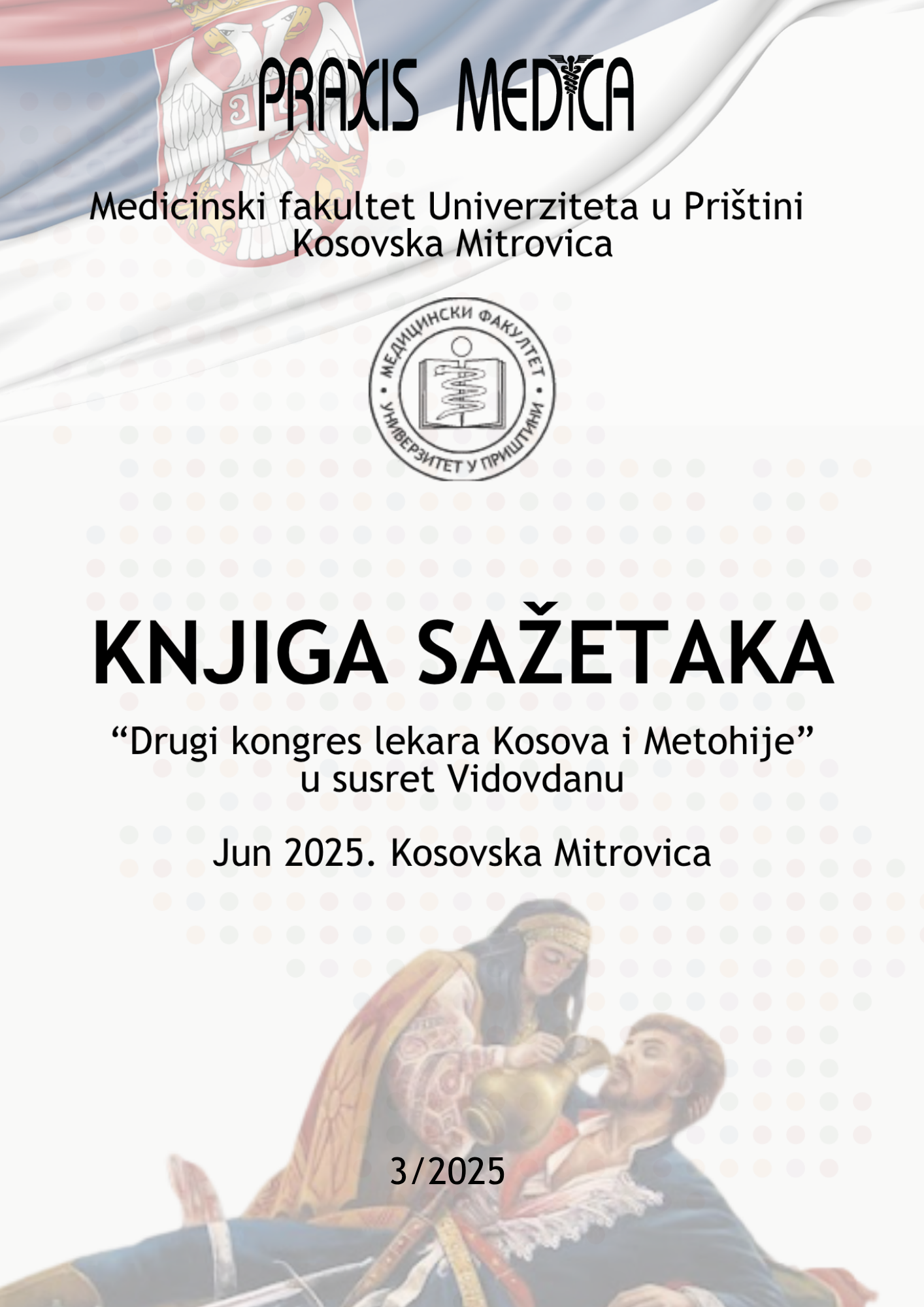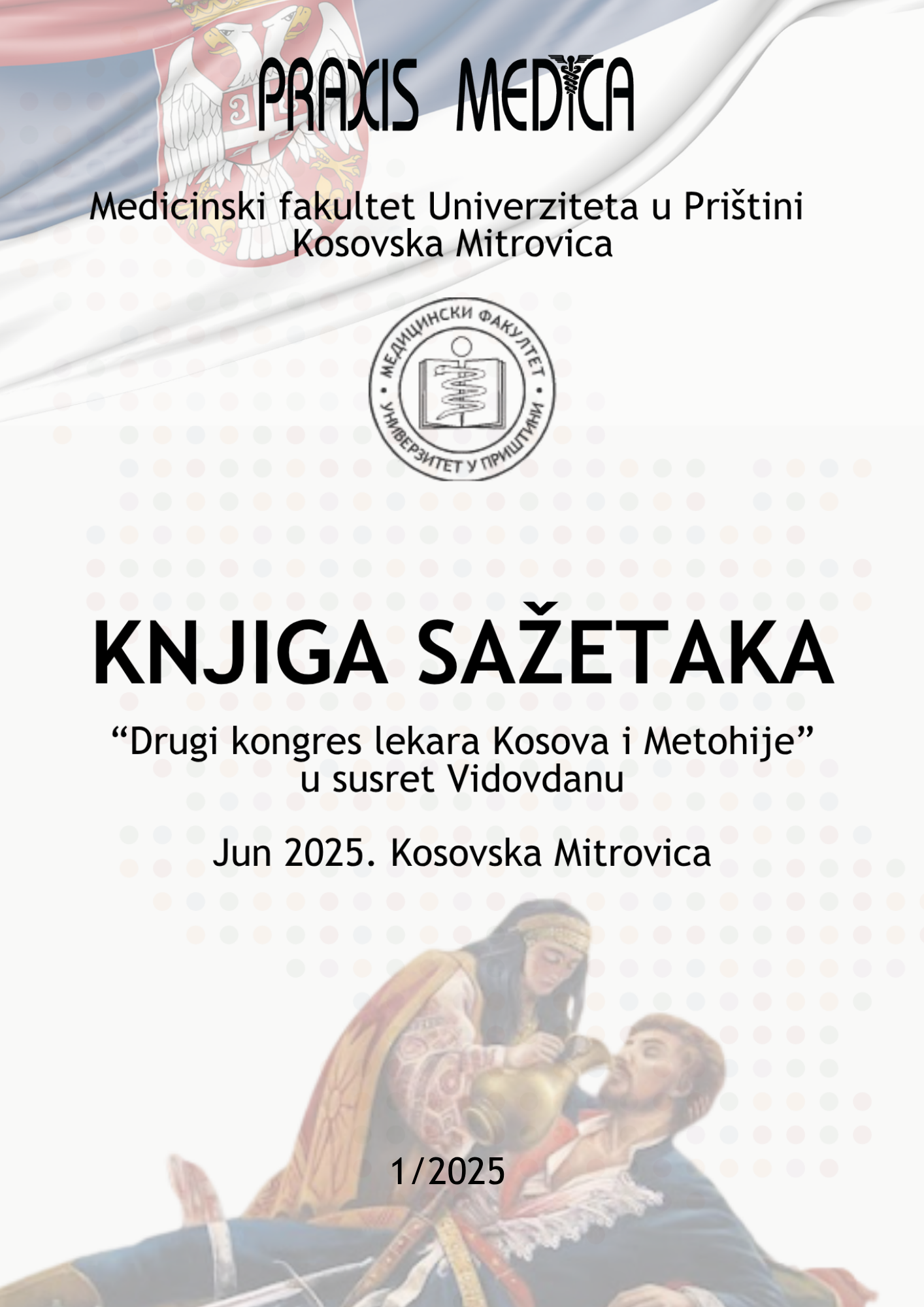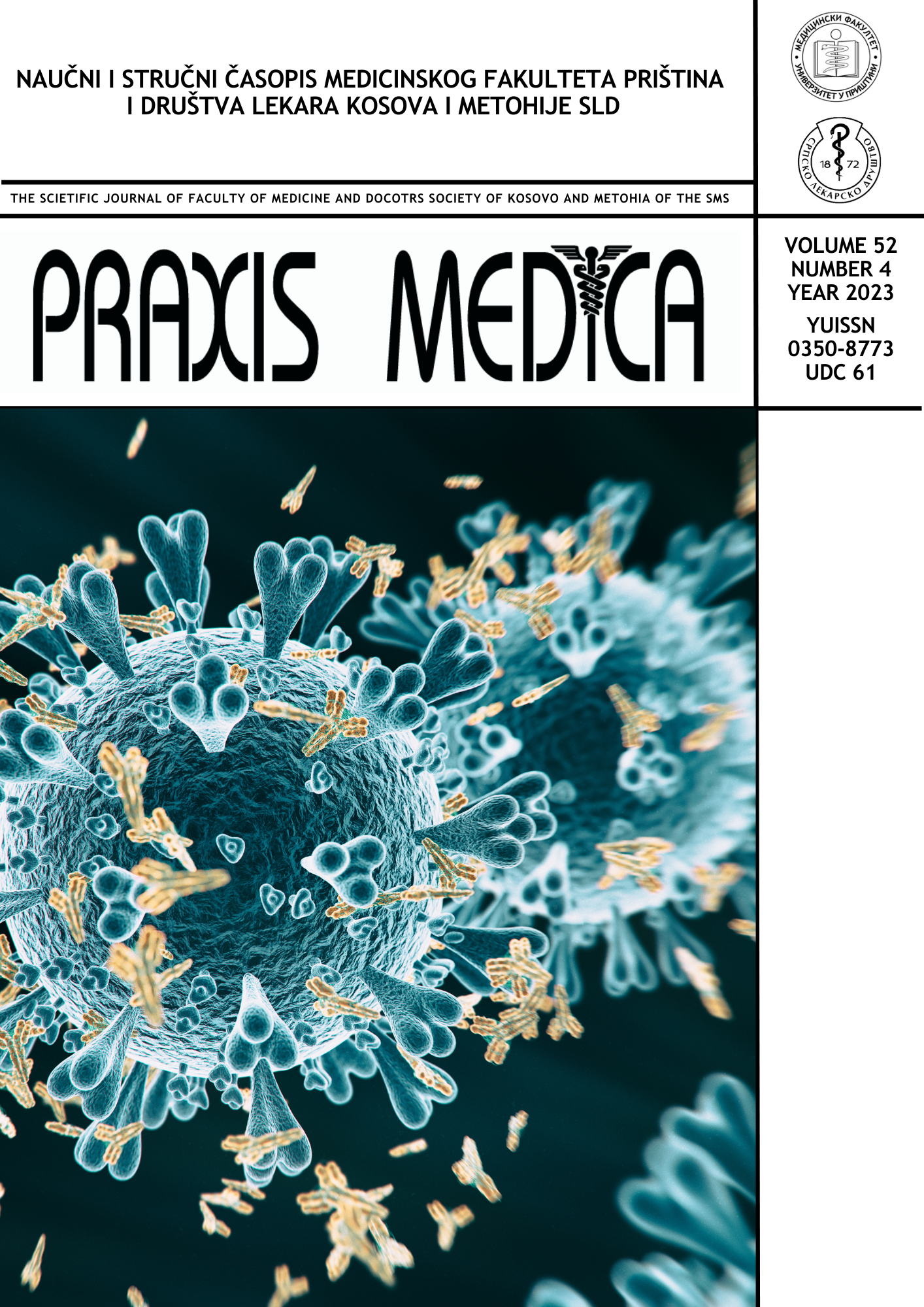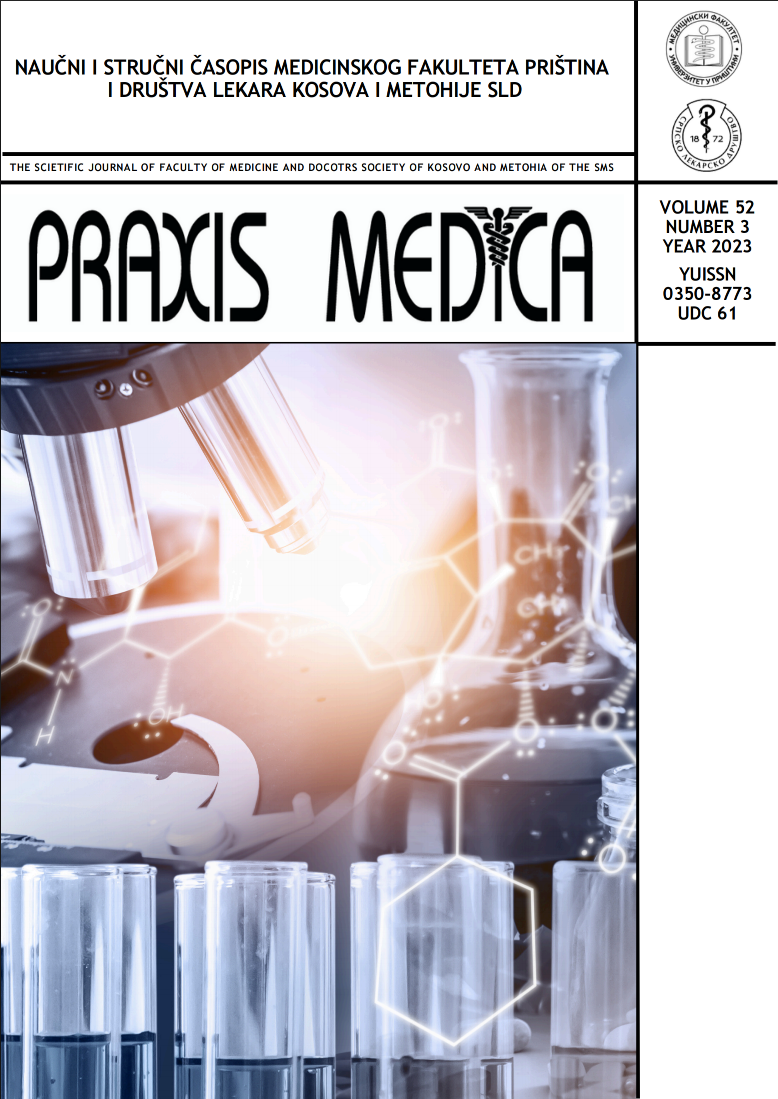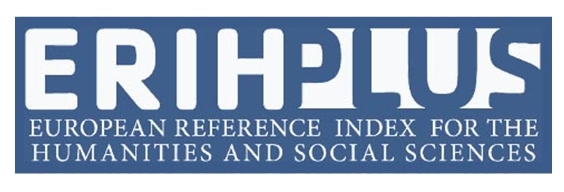Current issue
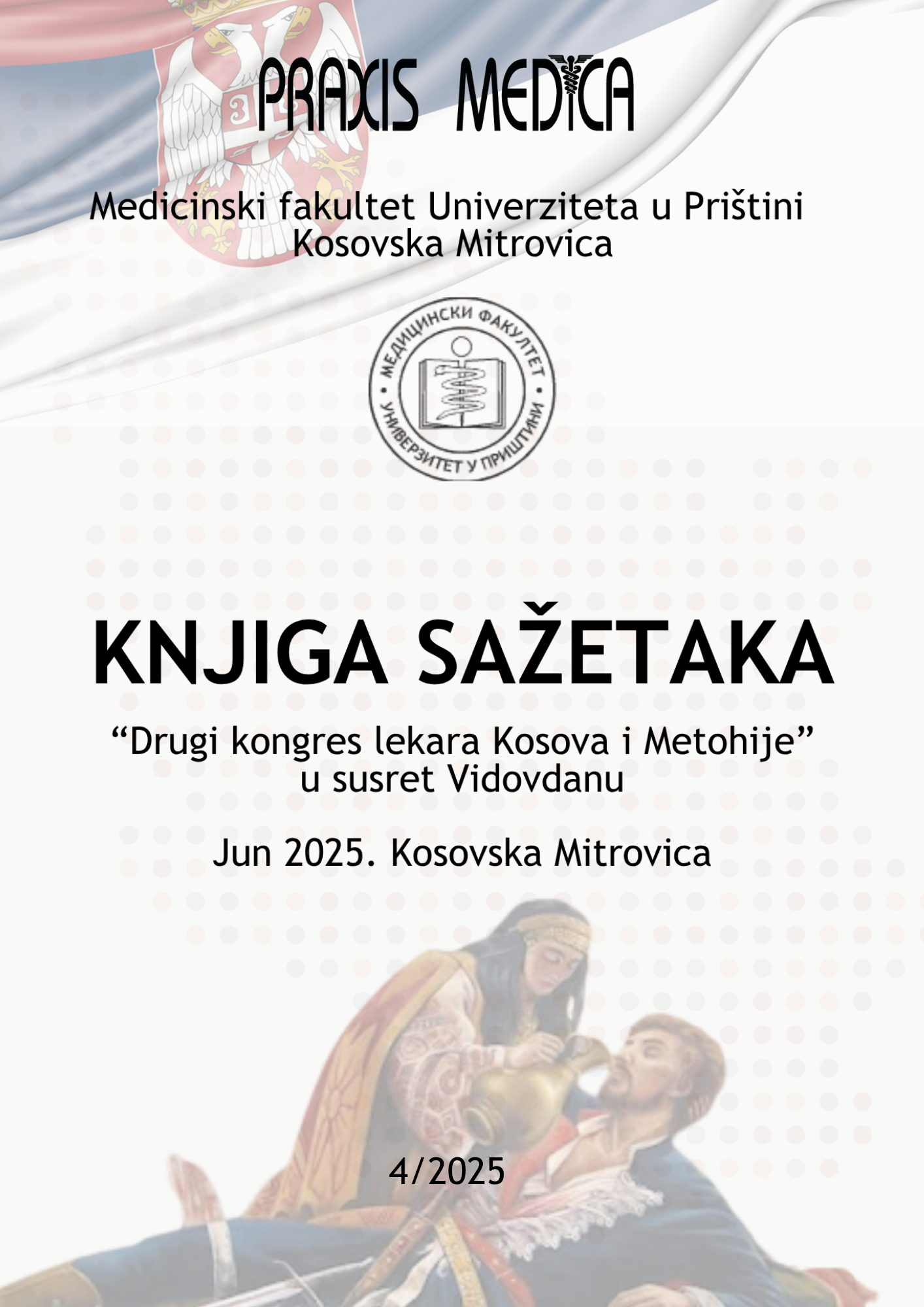
Volume 53, Issue 4, 2025
Online ISSN: 2560-3310
ISSN: 0350-8773
Volume 53 , Issue 4, (2025)
Published: 30.06.2025.
Open Access
All issues
Contents
30.06.2025.
Professional paper
EVALUACIJA MERA OBAVEZNOG PSIHIJATRIJSKOG LEČENJA NA SLOBODI NA KLINICI ZA PSIHIJATRIJSKE BOLESTI “DR LAZA LAZAREVIĆ”
Uvod: Razvoj psihijatrije u Srbiji počinje od 1861.godine i vezan je za KBP ”Dr Laza Lazarević” kao najstariju psihijatrisku bolnicu u Srbiji i na Balkanu.
Cilj našeg istraživanja je bio analiza sprovodjenja mera obaveznog psihijatrijskog lečenja na slobodi u sklopu člana 2. (zakon o izvršenju krivičnih sankcija “Sl. glasnik RS”, br. 85/2005, 72/2009, 31/2011) i člana 199 suzbijanja dela zbog kojih se mera sprovodi. U analizi je obuhvaćeno: regularnost javljanja na lečenje, dijagnostička kategorija, faza bolesti pri pregledima, saradljivost, recidiv dela, eventiualni prekid lečenja, analiza koja se odnosi na član 8 i član 6 (sankcije) kojim se jamči pravo na jednake uslove lečenja.
Metod: Posmatrani uzorak čine svi punoletni počinioci različitih krivičnih dela sa mentalnim poremećajima kojima je po odluci Suda odredjena mera obaveznog psihijatrijskog lečenja na slobodi, u periodu od 01.01.2009. do 31.12.2013. godine, a lečeni su na Klinici za psihijatrijske bolesti „Dr Laza Lazarević“, odnosno njihov pravni status te zdravlje uopšte, a posebno korektivni tretman.
Studija je retrospektivna, korišćen je kliničko rutinski metod uvida u medicinsku dokumentaciju (elektronsko evidentirani podaci) sa analizom sledećih parametara: regularnost javljanja na lečenje, dijagnostička kategorija, faza bolesti pri pregledima, saradljivost, recidiv dela, eventualni prekid lečenja, kao i analizu koja se odnosi na član 8 i član 6 (sankcije) kojim se jamči pravo na jednake uslove lečenja.
Rezultati: U istraživanje je uključeno 135 punoletnih počinilaca krivičnih dela sa mentalnim poremećajima kojima je po odluci Suda određena mera obaveznog psihijatrijskog lečenja na slobodi, u periodu od 01.01.2009. do 31.12.2013. godine, a lečeni su na Klinici za psihijatrijske bolesti „Dr Laza Lazarević“. Prosečna starost pacijenata je bila 41.1±12.8 godina, najmlađi pacijent je imao 21 godinu, a najstariji 86 godina. Najveći broj pacijenata je bio u starosnoj kategoriji od 31-40 godina. Preko 80% pacijenata kojima je određena mera obaveznog psihijatrijskog lečenja na slobodi su bili muškarci. Prema obrazovanju, dve trećine lica je imalo srednju školu, četvrtina osnovnu školu, višu i visoku školu je imalo 16% pacijenata. Dve trećine pacijenata nije bilo u braku, petina je bila oženjena/udata, dok su razvedeni i udovci činili manji deo uzorka. Dve trećine pacijenata je bilo nezaposleno, četvrtina zaposlena, a 15% u penziji. Većina pacijenata je bila iz gradske sredine, a gotovo polovina njih je živela sa svojom primarnom porodicom, dok je trećina pacijenata živela sama.
Zaključak: Rezultati dobijeni u ovom istraživanju ne odstupaju značajno od karakterizacije pacijenata za koje se smatra da su nesposobni da se izjasne u drugim zemljama, iako ova vrsta studije ne dozvoljava da se donesu opšti zaključci o prevalenciji dijagnoza kod pacijenata koji se smatraju nesposobnim da se izjašnjavaju.
Ključne reči: Evaluacija, mera obaveznog psihijatrijskog lečenja na slobodi, psihijatrijske bolesti.
Aleksandra Đerić, Nataša Dostanić, Mirjana Stojanović Tasić
30.06.2025.
Professional paper
Epidemiološka studija kognitivnog oštećenja u beogradskim domovima za stare
Uvod: Demencija je rastući svetski javnozdravstveni problem. Ona je glavni faktor koji određuje odluku o smeštaju starih osoba u domove za stare. Stoga je prevalencija demencije veća u domovima za stare u poređenju sa opštom populacijom. Osobe sa demencijom imaju rastuće kompleksne potrebe za negom koje zahtevaju specijalizovanu medicinsku, psihološku i socijalnu podršku kako bi održale kvalitet svog života. Kada potrebe za negom ne budu zadovoljene, pacijenti doživljavaju povećani distres, što dovodi do agitacije, konfuzije i smanjenog osećaja dobrog stanja, dok se negovatelji suočavaju sa burnout sindromom. Stoga je potrebno bolje razumevanje realnog kognitivnog statusa korisnika domova za stare.
Ciljevi istraživanja: Cilj naše studije je bio procena prevalencije demencije u domovima za stare u Beogradu.
Metodologija: U našem istraživanju smo koristili studiju preseka. Ispitanici su bili korisnici dva doma za stare u Beogradu, „Voždovac“ i „Bežanijska Kosa“. Semistrukturisani upitnik je korišćen za prikupljanje podataka o sociodemografskim karakteristikama (starost, pol, bračni status, nivo obrazovanja). Kognitivni status ispitanika je procenjivan srpskom verzijom Mini Mental testa (MMSE – Mini Mental State Examination). Učesnici su kategorisani kao dementni i kognitivno normalni prema MMSE skoru. Granične vrednosti MMSE skora za kognitivno oštećenje su korigovane u odnosu na nivo edukacije. Prevalencija demencija je procenjivana deskriptivnom statistikom.
Rezultati: Od ukupno 172 testirana ispitanika u domu za stare „Bežanijska Kosa“, 107 osoba je pokazalo kognitivno oštećenje na MMSE testu, pa je procenjeni interval poverenja od 95% za prevalenciju demencija u ovoj ustanovi bio 62,21±7,25%. Od ukupno 180 osoba pregledanih u domu za stare „Voždovac“, njih 46 je pokazalo kognitivno oštećenje na MMSE testu, pa je procenjeni interval poverenja od 95% za prevalenciju demencije u ovom domu za stare bio 25,56±6,37%.
Zaključak: Pokazatelji prevalencije demencije u domovima za stara lica imaju za cilj prikazivanje realnog stanja potreba njihovih štićenika kao i vodič za bolju organizaciju zdravstvene službe i nege u našoj zemlji.
Ključne reči: demencija, prevalencija, domovi za stare, Beograd.
Romana Petrović, Milica Popović Radovanović, Milica Bogdanović
30.06.2025.
Professional paper
RAZLIKE U SOCIODEMOGRAFSKIM I KLINIČKIM KARAKTERISTIKAMA, POSTAVLJANJU DIJAGNOZE I TERAPIJSKIM ALGORITMIMA IZMEĐU PACIJENATA SA NEPSIHOTIČNOM I PSIHOTIČNOM DEPRESIJOM
Uvod: Psihotična depresija je ozbiljna bolest tokom koje pacijent pati od kombinacije depresivnog raspoloženja i psihotičnih katrakteristika u vidu halucinacija i/ili sumanutih ideja.
Naši ciljevi su bili: Procena ispravnosti dijagnoze psihotične depresije (F32.3, F 33.3) i nepsihotične depresije (F32.1, F32.2, F 33.1, F 33.2); Procena odstupanja lečenja u kliničkoj praksi od algoritma lečenja psihotične depresije; Ispitivanje učestalosti najčešće ordiniranih antipsihotika i antidepresiva u kliničkoj praksi, kao i najčešće kombinacije ordiniranih antipsihotika (AP) i antidepresiva (AD) u kliničkoj praksi; Ispitivanje povezanosti socio-demografskih podataka sa psihotičnom depresijom.
Metod: Ovo istraživanje, dizajnirano kao retrospektivna kohortna studija, sprovedeno je u Klinici za psihijatrijske bolesti "Dr Laza Lazarević" u periodu od 1. maja 2014. do 1. maja 2017. godine. U studiju su bili uključeni hospitalizovani pacijenti sa dijagnozom teške epizode depresivnog poremećaja bez psihotičnih karakteristika (F32.2) i teške epizode depresivnog poremećaja sa psihotičnim karakteristikama (F32.3), prema kriterijumima ICD-10. Pacijenti su podeljeni u dve grupe, pri čemu je prvu grupu činili pacijenti sa dijagnozom F32.2, a drugu pacijenti sa dijagnozom F32.3.
Rezultati: U istraživanje je bilo uključeno 60 hospitalizovanih pacijenata, od kojih je 30 (50%) imalo dijagnozu teške epizode depresivnog poremećaja bez psihotičnih karakteristika, a 30 (50%) dijagnozu teške epizode depresivnog poremećaja sa psihotičnim karakteristikama.
Kada su u pitanju sociodemografske karakteristike, jedina statistički značajna razlika primećena je u polu između pacijenata bez psihotične depresije i onih sa psihotičnom depresijom. Naime, u grupi pacijenata sa nepsihotičnom depresijom, muškarci su činili više od dve trećine ispitanika, dok su u grupi pacijenata sa psihotičnom depresijom žene činile dve trećine ispitanika.
Kada je reč o terapiji, statistički značajna razlika primećena je u učestalosti primene antipsihotika u lečenju pacijenata u ispitivanim grupama (p=0,001). Naime, u lečenju pacijenata sa psihotičnom depresijom značajno češće su korišćeni prvenstveno tipični antipsihotici (26,7% naspram 3,3%), ali i atipični antipsihotici (70,0% naspram 50%). S druge strane, pacijenti sa nepsihotičnom depresijom češće su bili bez antipsihotičke terapije u poređenju sa pacijentima sa psihotičnom depresijom (46,7% naspram 3,3%).
Zaključak: U ovom istraživanju su pacijenti imali ispravnu dijagnozu za psihotičnu depresiju, ali nisu tretirani po važećem algoritmu.
Ključne reči: Psihotična depresija, nepsihotična depresija, algoritmi lečenja.
Mary Vukša, Marijana Marinković, Milica Bogdanović
30.06.2025.
Professional paper
Specifičnosti lečenja psihijatrijskih pacijenata sa komorbiditetom težih internističkih i neuroloških oboljenja
Uvod: U lečenju psihijatrijskih pacijenata sa komorbiditetom težih internističkih i neuroloških oboljenja neophodan je multidisciplinarni i holistički pristup.Potrebno je kreirati individualni plan lečenja za svakog pacijenta, sa pravim izborom psihofarmaka, prilagodititi doze lekova u skladu sa starosnom dobi, stepenom oštećenja hepatične i renalne funkcije, kao i pridruženim internističkim i neurološkim oboljenjima.
Cilj ovog rad je i da ukaže na važnost racionalnog korišćenja lekova, a u cilju što manje neženjenih efekata, što bolje terapijske adherence i kompijanse i što boljeg kvaliteta života naših pacijenata.
Metoda rada: U istraživanju je praćena i analizirana potrošnja psihofarmaka i ostalih grupa lekova klasifikovanih prema ATC klasifikaciji, u periodu od godinu dana od januara do decembra 2024. godine, na drugom odeljenju intezivne nege- nivo 2 za produženi urgentni tretman agitiranih pacijenata sa komorbiditentnim somatskim ineurološkim oboljenjima.
Rezultati: Broj različitih terapijskih grupa lekova po ATC podeli koji su propisani bolesniku (2. nivo ATC klasifikacije) je 6.73 ± 3.27. Ono što razlikuje potrošnju lekova na odeljenju intezivne nege u odnosu na druga psihijatrijska odeljenja jeste veća potrošnja u prvom redu antibiotika za parenteralnu primenu (Ceftriakson, Ciprofloksacin, Metronidazol, vankomicin...), antikoagulanasa, antihipertenziva i diuretika (katopil, enalapril...), hepatoprotektivnih lekova, gastroprotektivnih lekova, inhibitora protonske pumpe, insulinskih preparata, oralnih antidiabetika, vitamina sl.
Zaključak: Konsultativni pregledi raznih specijalnosti neophodni su u smislu korekcije već postojeće terapije ili uvođenja nove terapije u skladu sa indikacijama. Potrebno je posebno obratiti pažnju na interakcije sa lekovima za HIV, TBC, antikoagulantnim lekovima i dr., jer posledično može doći do smanjenja ili povećanja doze lekova, te doći do neželjenih reakcija.
Ključne reči: psihijatrijski pacijenti, intezivna nega, specifična terapija
Katarina Đokić-Pješčić, Anica Ranković, Ljiljana Simić
30.06.2025.
Professional paper
Preporuke za upravljanje lek-lek interakcijama kod psihijatrijskih pacijenata primenom Lexicomp baze lekova
Uvod: Psihijatrijski pacijenti često su izloženi kompleksnoj farmakoterapiji, koja uključuje kombinaciju antipsihotika, antidepresiva, stabilizatora raspoloženja, anksiolitika i lekova za komorbidna stanja. Ova polifarmacija značajno povećava rizik od lek-lek interakcija (LLI) koje mogu dovesti do ozbiljnih neželjenih dejstava, kao što su produženje QT intervala, serotoninski sindrom, prekomerna sedacija ili toksičnost usled farmakokinetičkih promena.
Cilj rada je da se ukaže na kliničku primenu baza podataka kao što je Lexicomp koja se pokazala kao ključna alatka u pravovremenom prepoznavanju i upravljanju potencijalno opasnim interakcijama.
Metod: Istraživanje je sprovedeno kao retrospektivna studija praćenja i identifikovanja interakcija lekova korišćenjem Lexicomp baze lekova, kao i analizom dobijenih preporuka za upravljanje lek-lek interakcija kod psihjatrijskih pacijenata lečenih u Klinici za psihijatrjske bolesti “Dr Laza Lazarević” u Beogradu.
Rezultati:Lexicomp baza nudi detaljan prikaz svake identifikovane interakcije, uključujući mehanizam delovanja, klinički značaj, nivo dokaza i konkretne preporuke za kliničku praksu. Kod interakcija klase D (preporučuje se modifikacija terapije), Lexicomp nudi smernice poput zamene jednog leka bezbednijom alternativom, prilagođavanja doze ili uvođenja dodatnog monitoringa (npr. EKG nadzor, merenje nivoa leka u plazmi). Za interakcije klase X (izbegavati kombinaciju), sistem jasno upozorava na visok rizik i nudi konkretne terapijske alternative. Na primer, pri identifikaciji potencijalno opasne kombinacije antipsihotika i makrolidnih antibiotika, Lexicomp preporučuje upotrebu antibiotika koji ne utiče na QT interval.
Zaključak:Ono što Lexicomp dodatno omogućava jeste brzo donošenje odluka u kliničkoj praksi zahvaljujući jednostavnom korisničkom interfejsu, prilagodljivim pretragama i mogućnosti personalizacije prema konkretnom pacijentu. Integracija ovih preporuka u svakodnevni rad značajno doprinosi smanjenju incidencije neželjenih dejstava i poboljšanju bezbednosti terapije kod psihijatrijskih pacijenata.Preporučuje se rutinska upotreba Lexicomp baze pri svakoj izmeni terapije, time se omogućava rani uvid u moguće interakcije i njihovo efikasno otklanjanje, čime se unapređuje kvalitet i sigurnost psihijatrijske farmakoterapije.
Ključne reči: upravljanje lek-lek interakcijama, psihijatrijksi pacijenti
Anica Ranković, Maja Davidović, Maja Tomić
30.06.2025.
Professional paper
ZNAČAJ PRIMENE SKORING SISTEMA I BIOMARKERA ZAPALJENJA U PREDVIĐANJU DVANESTOMESEČNOG PREŽIVLJAVANJA BOLESNIKA SA AKUTNIM PANKREATITISOM
UVOD: Težak akutni pankreatitis je oboljenje praćeno visokim intrahospitalnim mortalitetom koji se kreće u rasponu od 15-35%. Međutim, u odnosu
na intrahospitalni mortalitet, prema podacima iz literature,u periodu od 12 meseci nakon otpusta iz bolnice smrtnost je dvostruko veća(1,2)Kod
bolesnika koji su preživeli težak obilk akutnog pankreatitisaona iznosi skoro 70%.
CILJ: Cilj našeg istraživanja je bio da utvrdimo faktore koji bi mogli da nam pomognu u predviđanju 12 – mesečnog preživljavanja bolesnika sa
akutnim pankreatitisom.
METODOLOGIJA: Istraživanje je sprovedeno u KBC Bežaniska kosa i obuhvatilo je ukupno 50 bolesnika oba pola, starijih od 18 godina sa kliničkom
slikom akutnog pankreatitisa. Za sve ispitanike su sakupljeni demografski, podaci o komorbiditetu, gojaznosti, eventualnom razvoju sepse /ili drugih
komplikacija, dužini boravka u JIL i na mehaničkoj ventilaciji.Laboratorijski markeri (uključujući CRP i PCT) i skoring sistemi (BISAP, MEWS, Ranson
iAPACHE II)praćeni su u više vremenskih tačaka (na prijemu, nakon 48h, 72h, 7 dana). Uticaj svih ovih faktora na dvanaestomesečno preživljavaje je
procenjen pomoću Cox regresione analize.
REZULTATI: Od ukupno 50 ispitanika intrahospitalni mortalitet je iznosio 16% (8 bolesnika). Preostalih 42 bolesnika koji su doživeli otpust iz bolnice je
praćeno u periodu od 12 meseci nakon hospitalizacije. Dvanaest meseci nakon otpusta iz bolnice preživela su 37 bolesnika, muškoga pola 19 i
ženskoga 18. Kod 2 bolesnika uzrok AP je bio alkoholizam, kod 1 nepoznat uzrok a kod dvoje hiperlipidemija.Bolesnici koji su nakon 12 meseci
imalismrtni ishodbili su u grupi od 46-55g i od 66-75g.
Značajni prediktori preživljavanja 12 meseci nakon otpusta iz bolnice bile su visoke vrednosti BISAP, MEWS, APACHE II skora kao i povišene vrednosti
PCT i CRP izračunavane u različitim vremenskim tačkama. Prisustvo sepse (p-vrednost long-ranka-0,023, vreme preživljavanja 152.8 dana);
gojaznost(p-vrednost long-ranka<0.001, vreme preživljavanja 107.9 dana);i teške forme AP(p-vrednost long-ranka-0,002, vreme preživljavanja 96.3
dana); je takođe uticalo na kraći životni vek ovih bolesnika.Vrednost MEWS skora merene u sve četiri tačke, APACHE IInultog dana i nakon 48 h kao i
Ransom nakon 48h pokazale su dobru prediktivnu vrednost u predviđanju dugoročnog preživljavanja (<0.001).Od biomarkera zapaljenjaPCT meren
nakon 48,72 h inakon 7d pokazali su dobru statističku značajnost u dugoročnom preživljavanju (<0.001).Starosna dob je bila nezavisni prediktor
mortaliteta kod ovih bolesnika
ZAKLJUČAK: Starije životno doba, povišene vrednosti biomarkera zapaljenja, visoke vrednosti skoring sistema mogu biti korišćeni za predviđanje
ishoda lečenja kako u ranoj fazi lečenja tako i u proceni dugoročnog preživljavanja.
KLJUČNE REČI: akutni pankreatitis, dugoročno preživljavanje, skoring sistemi, biomarkeri zapaljenja
Olivera Marinković
30.06.2025.
Professional paper
PERCEPCIJA RIZIKA OD RAKA STUDENATA MEDICINE: FOKUS NA RAK GRLIĆA MATERICE
Uvod. Rak grlića materice predstavlja značajan globalni javno zdravstveni problem i zauzima četvrto mesto po učestalosti među karcinomima kod žena. Cilj rada
bio je da istraži percepciju studenata medicine o faktorima rizika za rak grlića materice, kao prema infekciji Humanim papilloma virusom (HPV) i informisanost o
HPV vakcini. Materijal i metode. Sprovedena je studija preseka kojom su bili obuhvaćeni studenti četvrte, pete i šeste godine Integrisanih Akademskih Studija
(IAS) medicine Medicinskog fakulteta Univerziteta u Nišu. Primnjen je anonmni upitnik koji je distribuiran preko Google platforme. Rezultati. U istraživanju je
učestvovao ukupno 361 student ( 21% muškog i 79% ženskog pola). Prosečan broj poena na testu znanja o raku grlića materice iznosio je 17.25±7.92 (min 0–max
30). Srednjoškolsko obrazovanje studenata imalo je značajan uticaj na znanje o faktorima rizika za rak grlića (p<0.001), kao i mesto stalnog prebivališta.
Značajno viši skor znanja imali su student iz gradske sredine (p=0.01); studenti čije su majke imale srednje (p=0.002) ili visoko obrazovanje imali su značajno
bolje znanje (p<0.001) od onih čije su majke imale osnovno obrazovanje, kao i studenti čiji su očevi imali visoko obrazovanje (p<0.05) u odnosu na očeve
srednjeg obrazovanja. Studenti koji su bili srednjeg i visokog imovinskog stanja imali su značajno viši skor znanja (p=0.008) od studenata koji su bili niskog
imovinskog stanja. Svi studenti koji su završili srednju školu medicinske struke imali su značajno bolje znanje o HPV infekciji od studenata koji su završili
gimnaziju (p<0.001) i škole nemedicinske struke (p<0.001). Studenti koji su bili u partnerskoj vezi (p=0.005) i oni koji su bili seksualno aktivni (p=0.001) imali su
značajno bolje znanje o HPV infekciji. Samo 25.5% studenata bilo je svesno značaja HPV vakcinacije u prevenciji raka grlića materice i 16.0% znalo je nešto o
HPV vakcini. Visoko obrazovanje majke (p=0.028), parterska veza (p=0.041) i seksualna aktivnost (p=0.001) bili su značajno povezani sa višim nivoom znanja o
HPV infekciji. Zaključak. Istraživanje je pokazalo zadovoljavajući da student imaju zadovoljavajući nivo znanja o raku grlića materice, ali je svest o riziku od
HPV infekcije i raka grlića materice kao i o prevenciji bila je relativno niska.
Ključne reči: rak grlića materice, faktori rizika, studenti medicine, HPV infekcija, prevencija
Nataša Rančić, Mirko Ilić
30.06.2025.
Professional paper
“PRONE POSITION” U INTENZIVNOM LEČENJU PACIJENATA
Uvod: Položaj na trbuhu, poznat kao prono položaj, podrazumeva postavljanje pacijenta u ležeći položaj sa licem okrenutim nadole. Najznačajnija i
najčešće proučavana primena prono položaja je kod pacijenata sa akutnim respiratornim distres sindromom (ARDS), gde dolazi do teškog narušavanja
oksigenacije pluća. Položaj na trbuhu omogućava ravnomerniju distribuciju ventilacije i smanjuje kompresiju zadnjih delova pluća usled težine srca i
abdominalnih organa, čime se poboljšava razmena gasova i povećava oksigenacija. (1, 2) Višestruke randomizovane studije i metaanalize, potvrdile
su da rana i produžena primena prono položaja može značajno smanjiti mortalitet kod pacijenata sa teškim ARDS-om. (3) Tokom pandemije COVID
19, ovaj položaj se dodatno afirmisao kroz tzv. "budni prono položaj" (awake proning), kod neintubiranih pacijenata sa hipoksemijom, kao
neinvazivna mera za poboljšanje saturacije kiseonika. (4)
SAŽETAK
Glavni deo rada: Najvažnija indikacija za položaj na trbuhu je ARDS. Park I saradnici sproveli su metaanalizu 8 randomizovanih kontrolisanih studija
sa preko 2000 pacijenata. Utvrđeno je da je prono položaj smanjio stopu smrtnosti sa 47% na 41%. Subanalize su pokazale da je duža primena prono
položaja (>12 sati) i upotreba strategije zaštite pluća dodatno smanjila smrtnost, nije povećao učestalost kardiovaskularnih događaja ili ventilatorske
pneumonije, ali je bio povezan sa povećanom učestalošću dekubitusa i dislokacijom endotrahealnog tubusa. (5) Položaj na trbuhu može pomoći u
drenaži sekreta iz pluća, čime se smanjuje rizik od aspiracije i poboljšava čišćenje disajnih puteva. Sistematska pregledna studija i mrežna meta
analiza analiziraju različite telesne položaje u prevenciji VAP-a kod kritično obolelih pacijenata. Rezultati sugerišu da su polusedeći i prono položaji
povezani sa smanjenjem incidencije VAP-a i smanjenjem mortaliteta u poređenju sa supinim položajem. (6) Prono položaj se koristi I u tretmanu
intrakranijalne hipertenzije u neurologiji. U studiji Demira I saradnika prikazano je da produženi prono položaj ne povećava intrakranijalni pritisak
tokom prvih 24 sata. Prono položaj se smatra bezbednim u uslovima adekvatne sedacije, neuromuskularne blokade i pažljivo podešene mehaničke
ventilacije. (7)
Sistemski pregled literature koji se fokusira na komplikacije povezane sa prono položajem tokom hirurških zahvata. Identifikovane su različite
komplikacije, uključujući povrede oka, respiratorne probleme i hemodinamske promene, što naglašava značaj pažljivog pozicioniranja i monitoringa
tokom operacija u prono položaju.(9) Kontraindikacije za prone poziciju obuhvataju sledeće: teške povrede kičme I grudnog koša, kardiovaskularni
problem, trudnoća-posebno u kasnijim fazama, prekomerena telesna težina, abdominalne povrede, cirkulatorni I metabolički poremećaji… Izvođenje
KPR-a u prono položaju predstavlja značajan izazov zbog otežanog pristupa grudnom košu i potencijalnog rizika od aspiracije. Sistematski pregled
Jiang i saradnika (2022) obuhvatio je 29 slučajeva i 4 studije, upoređujući efikasnost KPR-a u prono i supin položaju. Rezultati sugerišu da KPR u
prono položaju može biti efikasna opcija kada je okretanje pacijenta na leđa teško ili rizično. (10)
Zaključak: Prono položaj je efikasan i bezbedan metod za poboljšanje oksigenacije i smanjenje smrtnosti kod pacijenata sa ARDS-om, naročito kada
se primenjuje uz strategije zaštite pluća i kada traje duže od 12 sati dnevno. Ipak, uprkos brojnim prednostima, primena prono položaja nosi i
određene izazove i dileme, posebno u pogledu bezbednosti, pravilnog monitoringa, mogućnosti izvođenja reanimacije, kao i rizika od povreda i
dekubitusa.
Ključne reči: prono položaj, ards, oksigenacija
Danijela Jakovljević, Aleksandar Jakovljević, Nikola Trifunović
30.06.2025.
Professional paper
CITOKINSKI PROFIL KAO DIJAGNOSTIČKI I PROGNOSTIČKI MARKER KOD KRITIČNO OBOLELIH PACIJENATA SA SEKUNDARNOM SEPSOM
Uvod. U svrhu što boljeg razumevanja kompleksnog imunskog odgovora kod kritično obolelih i povređenih pacijenata sa sekundarnom sepsom
ispitivani su brojni pro-inflamatorni i anti-inflamatorni medijatori sa često kontradiktornim rezultatima istraživanja. I dalje je u fokusu istraživanja
uticaj osnovnog oboljenja koje je prouzrokovalo sepsu, kao i uticaj vrste mikrobiološkog uzročnika na imunski odgovor kritično obolelih i povređenih.
Takođe se i dalje intenzivno proučava povezanost imunskog odgovora sa preživljavanjem ove populacije pacijenata.
Cilj: Na osnovu nivoa pro- i anti- inflamatornih medijatora kod kritično obolelih pacijenata sa sekundarnom sepsom utvrditi da li se profil citokina
razlikuje u odnosu na vrstu bakterijskog proutzrokovača i da se proceni prognostička vrednost u odnosu na ishod. Mera ishoda bila je bolnički
mortalitet.
Metode: Uzorci krvi za određivanje citokina uzeti su od 125 kritično obolelih pacijenata sa potvrđenom teškom sekundarnom sepsom porekla
pankreatitisa, peritonitisa i teške traume, koji su primljeni na lečenje u hiruršku jedinicu intenzivne terapije. Određene su koncentracije pro
inflamatornih TNFα, IL1α, IL1β, INFµ, IL-6, IL-8, IL-12 р70, IL-17А, IP-10 INFᵧ- MCP-1, MIP1α и MIP1β i anti-inflamatornih medijatora IL-4, IL-10, IL-13,
IL-27, IL-31 и IL-33 u tri vremenska perioda: na dan prijema-prvi dan, a potom trećeg i petog dana. Standardnim mikrobiološkim ispitivanjima
određena je vrsta bakterijskog prouzrokovača.
Rezultati: Značajne razlike u koncentracijama citokina u pogledu prirode bakterijemije ustanovili smo kod svih pro-inflamatornih i anti-inflamatornih
citokina, osim IL-8, u trećem danu merenja. Najniže koncentracije citokina su izmerene kod pacijenata sa polimikrobnom hemokulturom.Jedini
značajan prediktor letalnog ishoda u petom danu merenja bio je IL-17А, AUR ROC 0,665 (95% interval poverenja 0,519-0,791, р=0,034) sa
sekundarnom sepsom kao komplikacijom peritonitisa.
Zaključci: Prema vrsti bakterijskog prouzrokovača utvrdili smo da su najniže koncentracije citokina bile kod pacijenata sa polimikrobnom
hemokulturom. IL-17A je dobar prediktor ishoda kod sekundarne sepse koja je nastala kao komplikacija peritonitisa. Niska koncentracija IL-17A kod
pacijenata sa septičkim peritonitisom predviđa letalni ishod u prvom danu merenja. Nasuprot tome, koncentracije ostalih citokina korelirale su sa
ishodom tek petog dana merenja i bile veće kod preživelih u odnosu na umrle.
Ključne reči: citokini, sepsa, hemokulture, kritično oboleli, ishod
Snežana Đukić, Maja Šurbatović
30.06.2025.
Professional paper
DA LI JE POST-SPINALNA GLAVOBOLJA UVEK POST-SPINALNA GLAVOBOLJA ILI NEŠTO
Komplikacije regionalne anestezije (RA),izazov i problema anesteziologa. Post duralna punkciona/postspinalna glavobolja smatra se najčešćom, gotovo
očekivanom. Pulsirajuća glavobolja nakon RA inicijalno okcipitalno uz bol u ramenima i vratu sa difuznim karakterom koju prati mučnina,nagon na povraćanje
inicijalno se definiše kao postduralna punkciona/postspinalna glavobolja.Da li je uvek tako?
Trudnica starosti 25 godina primljena je na Odeljenje ginekologije sa akušerstvom radi operativnog završetka trudnoće carskim rezom.Prethodno obavljena
priprema – laboratorijska obrada, pregled interniste i anesteziologa.Bez ispada u ličnoj anamnezi,prva uredno kontrolisana trudnoća.Negira ranije operativno
lečenje, negira hronična oboljenja i bolesti od značaja,nepušač.Carski rez indikovan zbog disproporcija karličnih mera i karlične prezentacije ploda.Urađen
planiran carski rez u uslovima regionalne (spinalne) anestezije.Intraoperativni i postoperativni tok protekao uredno, pacijentkinja otpuštena kući nakon 5 dana
bez subjektivnih tegoba urednog opšteg statusa.
10-tog dana od porođaja ponovni prijem u bolnicu sada na odeljenje hirurgije zbog upornog povraćanja , nelagodnosti u trbuhu i izrazite glavobolje koja ne
menja karakter promenom položaja tela niti se smiruje nakon povraćanja. Potencira glavobolju čeone lokalizacije bez propagacije ali sa smetnjama u vidnom
polju.Tegobe traju unazad 5 dana krenule su naglo prvo razvojem mučnine i nagona na povraćanje,smetnjama u vidu i bolovima u stomaku potom i razvojem
glavobolje koja lokalizaciju i karaketer ne menja od početka do hospitalizacije.Uz hirurga nakon kliničkog pregleda i isključivanja akutnog hirurškog oboljenja,
laboratorijske i ultrazvučne obrade pozvan inicijalno anesteziolog zbog navoda spinalnog bloka unutar 10 dana i potencijalne postspinalne glavobolje,takođe
obavljena konsultacija ginekologa i neurologa. U nalazu neurologa bez neuroloških ispada osim ispada u perifernom vidu i nemogućnošći izvođenja neuroloških
proba zbog mučnine i nagona na povraćanje.Uključena inicijalna simptomatska terapija rehidratacija, analgetici i antiemetici i konzilijarno odlučeno da se
pacijenkinji uradi hitan MSCT endokranijuma.Na MSCT-u od nivoa moždanog stabla sa kranijalnim širenjem ka pinealnoj regiji postkontrasno se uočava
nehomogena tumorska lezija , lobularnih perifernih kontura , aksijalnog promera 32 x 30mm koji komprimuje 3 moždanu komoru i dovodi do posledičnog
hidrocefalusa.Levo u nivou talamusa postkontrasno se uočava tumorska lezija lobularnih kontura promera 38x44mm, koja ima se utisak ima kontakt sa opisanom
lezijom distalno pri čemu obliteriše levu lateralnu komoru.Pacijentkinja hitno upućena na Neurohiruršku kliniku UKC Niš gde je operisana.Postoperativni tok
protekao uredno nakon čega je planirano dalje lečenje i oporavak.
Postduralnu punkcionu/postspinalnu glavobolju odlikuje je spektar diferncijalnih dijagnoza, usko povezanih ali različite terapijske strategije:
meningitis,encephalitis,tenziona,laktaciona i cluster glavobolja,migrena,cerebralna venska tromboza (CVT),eklampsija,subduralni hematom,subarahnoidalna
hemoragija i intrakranijalna masa.Postduralnu punkcionu/postspinalnu glavobolju uvek treba posmatrati kao moguću komplikaciju i razlog posturalne glavobolje,
ali ne kao definitivnu dijagnozu posebno kod mlađe populacije- trudnice,gojazni i pacijenati nakon COVID-19. Incidenca tumora mozga opšte populacije je oko
1% sa značajnim podatkom nespecifične kliničke prezentacije,glavobolja na koju se ne obraća pažnja i podatkom da je svaki tumor mozga maligni svojom
lokalizacijom bez obzira na patohistološki karakter.Pravovremena,usmerena i ciljana dijagnostika i što ranije uvođenje simptomatske terapije uz definitivno
zbrinjavanje postulat su u postduralnoj/postspinalnoj glavobolji.
Ključne reči:regionalna anestezija,spinalni blok,trudnoća,porođaj,postduralna punkciona glavobolja,tumori mozga
Tijana Smiljković, Ljubuša Mirić, Jelena Simić Nikolić


